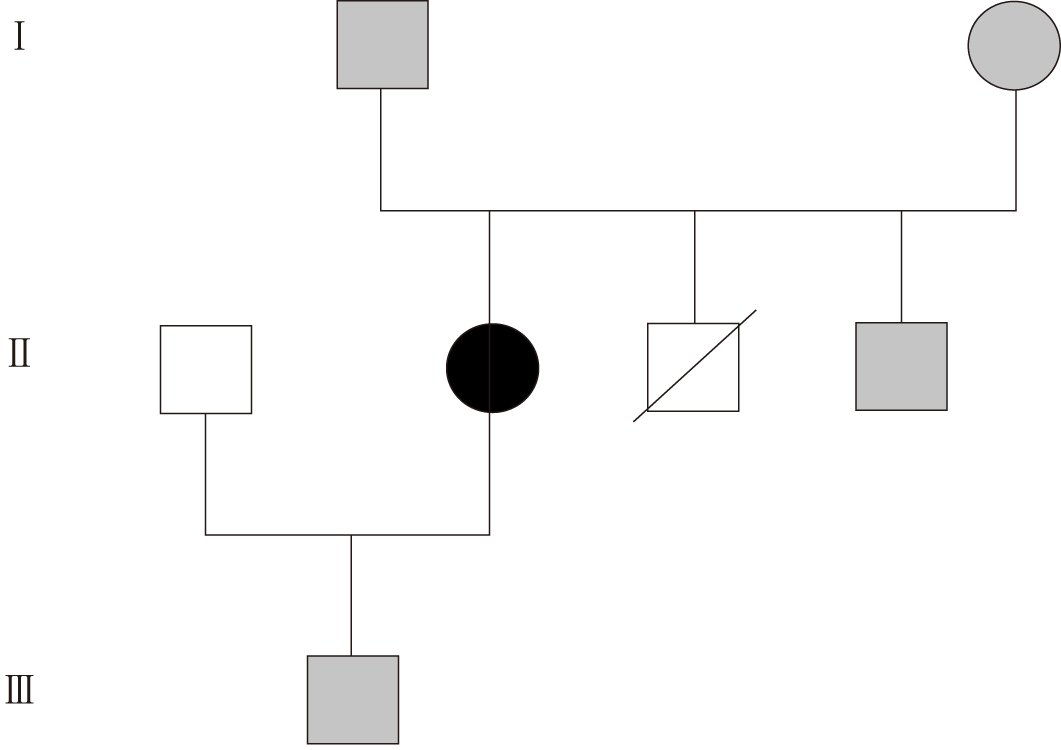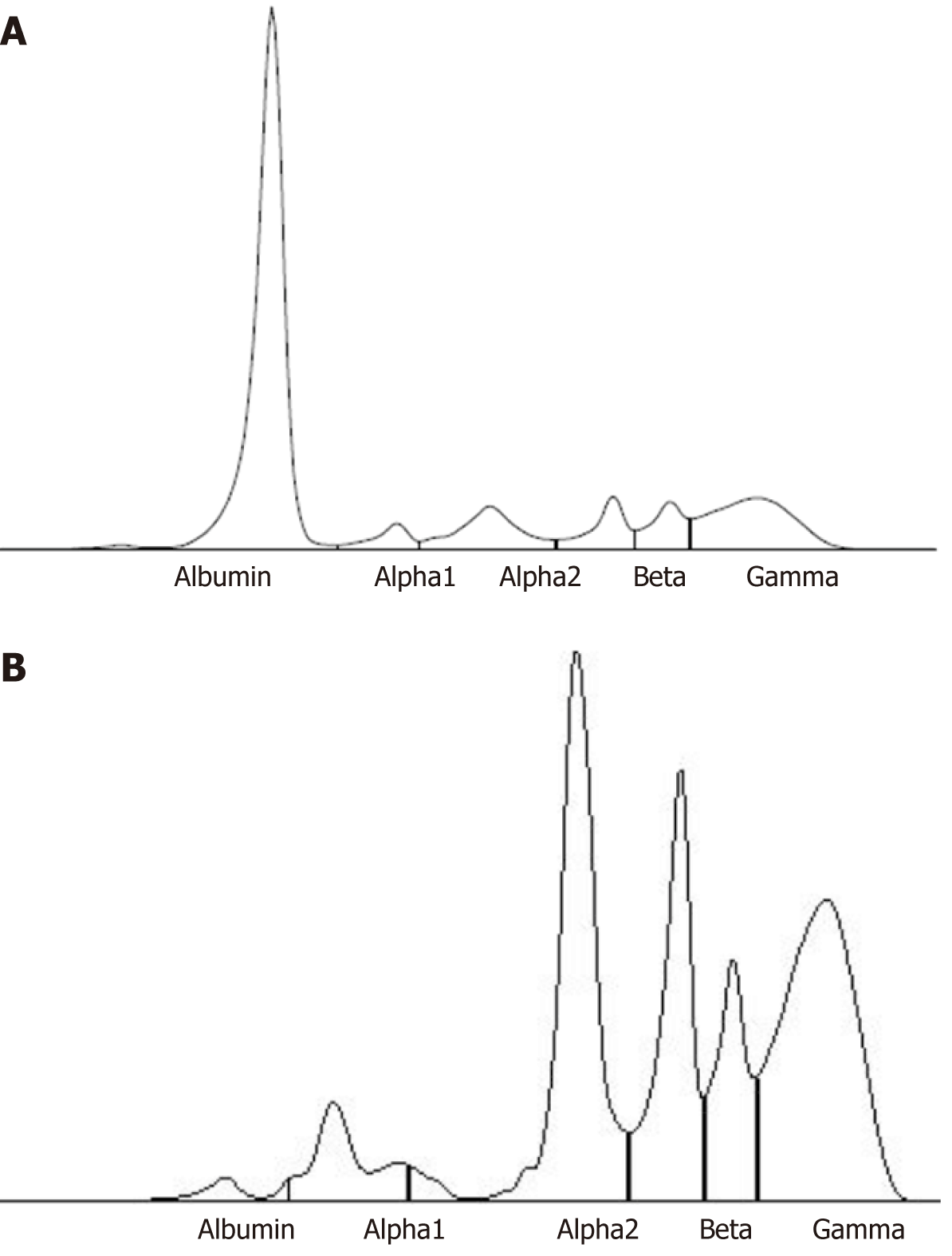Copyright
©The Author(s) 2019.
World J Clin Cases. Feb 26, 2019; 7(4): 466-472
Published online Feb 26, 2019. doi: 10.12998/wjcc.v7.i4.466
Published online Feb 26, 2019. doi: 10.12998/wjcc.v7.i4.466
Figure 1 Family pedigree.
The analbuminemic patient is represented by a black symbol. Grey symbols denote heterozygous subjects. Void symbols indicate individuals not examined in the present study. One of the three siblings of generation II died for unknown reasons in his first week of life.
Figure 2 Capillary electrophoresis profile of serum proteins in a control (A) and in our patient (B).
The latter shows the presence of a minimal amount of serum albumin (1.6%, n.v. 55.8%-66.1%), with a simultaneous increase of the other serum protein fractions: alpha 1 (7%, n.v. 2.9%-4.9%), alpha 2 (29.7%, n.v. 7.1%-11.8%), beta 1 (18.4%, n.v. 4.7%-7.2%), beta 2 (10.7%, n.v. 3.2%-6.5%), gamma (32.6%, n.v. 11.1%-18.8%).
Figure 3 HA and DNA sequence analysis of exon 12 of ALB in the affected family.
A: HA analysis. The DNA encompassing exon 12 and the exon-intron junction from the patient, her mother and father, and two controls were amplified with primers A23A and A24A and the fragments were electrophoresed onto a non-denaturing polyacrylamide gel: lane 1, proband; lane 2, mother; lane 3, father; lane 4, brother, lane 5, son, and lanes 6-7, controls. The same samples were denatured and cooled before loading: lane 1′, proband; lane 2′, mother; lane 3′, father; lane 4’, brother, lane 5’, son, and lanes 6′-7′, controls. Heteroduplexes are evident in the parents, in the brother, and in the son (lanes 2, 3, 4, 5, and 2′ 3′, 4’ and 5’), indicating a heterozygous condition, while an abnormal homoduplex is present in the homozygous proband. No variation due to conformation polymorphism could be seen under these electrophoretic conditions and therefore the result of SSCP analysis are not reported in the figure; B: DNA sequence of the mutated region of exon 12 in the patient. The arrows indicate the two bases that are deleted in the patient: CA at nucleotide positions c. 1614_1615. The patient is homozygous for this deletion.
- Citation: Suppressa P, Carbonara C, Lugani F, Campagnoli M, Troiano T, Minchiotti L, Sabbà C. Congenital analbuminemia in a patient affected by hypercholesterolemia: A case report. World J Clin Cases 2019; 7(4): 466-472
- URL: https://www.wjgnet.com/2307-8960/full/v7/i4/466.htm
- DOI: https://dx.doi.org/10.12998/wjcc.v7.i4.466











